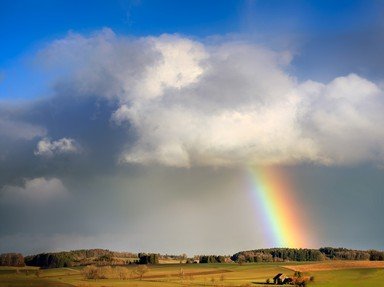Quiz Answer Key and Fun Facts
1. In Hinduism, which god is associated with rain and thunderstorms, and is often depicted riding on a white elephant?
2. Lono is the rain god in a religion that is still practiced today in a part of the USA. In which state would you find most followers?
3. Hellenism is a modern religion that uses the ancient Greek pantheon. Which god do practioners hold responsible for creating rain by releasing water from the clouds?
4. In Maori religion, how is rain believed to be generated by the god Tāwhirimātea?
5. In Chinese culture and religion, what powerful creature is believed to be associated with rain and water, with its movements influencing the weather?
6. The Nahuas are a group of the indigenous people of Mesoamerica who continue to observe the Aztec religion. Which of their gods is connected to rain and agriculture, often portrayed with a maize plant emerging from their body?
7. Heathenry is a modern religious movement based on Norse traditions. Which deity in Heathenry is linked to thunder and rain, wielding a mighty hammer that leads to thunderclaps?
8. In Japanese Shintoism, how is rain believed to be created by the deity Izanagi?
9. Which culture features a rain god named Thagyamin, often depicted with a conch shell?
10. In Australian Aboriginal belief, which ancestral being or "Dreamtime" figure is often associated with the creation of rain and water sources?
Source: Author
wellenbrecher
This quiz was reviewed by FunTrivia editor
looney_tunes before going online.
Any errors found in FunTrivia content are routinely corrected through our feedback system.
